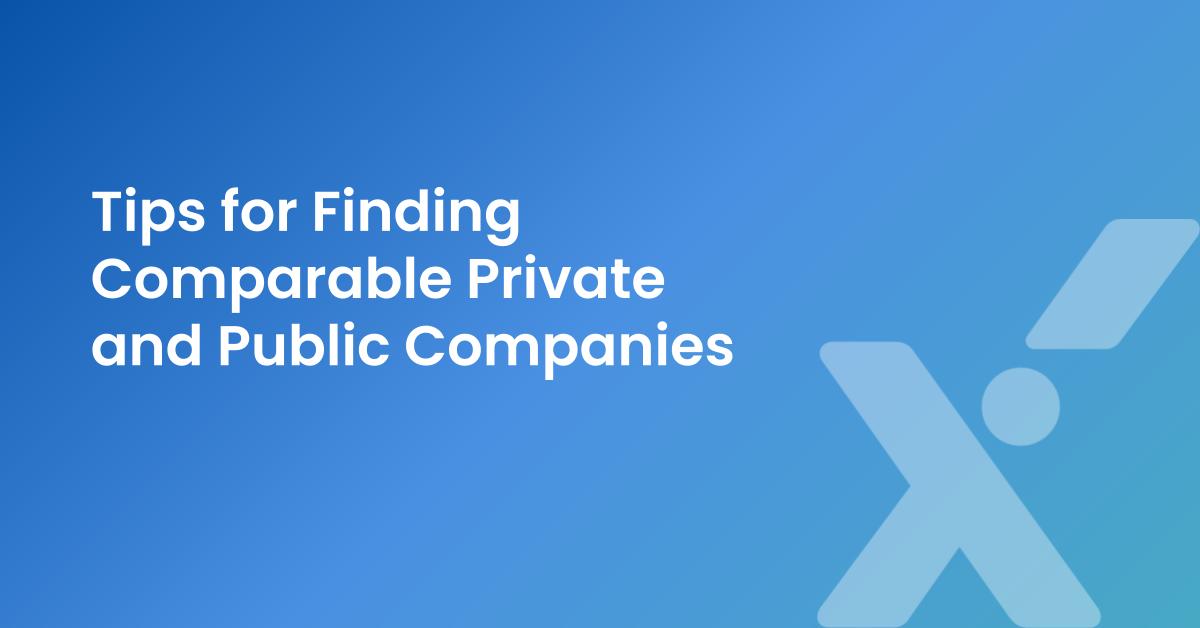The comparable company valuation model is built on the idea that the valuation of your target company would be close to that of a company that is similar to your target. Eventually, what you would try to arrive at is a cohort or companies that are the best-suited comparable and their multiples that help you make inferences on the fair market value of your target company.
Identifying the most similar company to the target you are trying to value is critical to building a robust and defensible valuation model. The starting point for this analysis is having a comprehensive comparable company universe to compare your company too.
A platform like Cyndx Finder, provides you with a robust, well-organized dataset of public company financials for you to select from.
How to Set Comparable Criterias
There are multiple factors that determine whether or not a company is a good comparable company for your company. It is a good practice to do a preliminary selection of comparable companies using the below-mentioned criteria and then dig deeper into each so that you can better understand the similarities and differences. We call this creating your Comparable Company Universe.
There are many factors that contribute to whether or now a company is appropriate for your comparable universe. Here is a list of some of these factors:
- Products and Services
- Industry Classification
- Geography
- Size
- Financial characteristic
- Defensive profile
Products and Services
Understanding the products and services that your target company offers is the obvious place to begin when trying to identify a comparable company. Subsequently, you would look at the industry in which the target is offering these products and services.
An HR Tech platform company and an HR services company may both be in the same industry, but don’t offer the same products and service and have very different financial profiles. Similarly, a luxury apparel maker is not comparable to a firm producing mass-market clothing products, although both compete in the same industry.
A cursory check on the target and using the data from its website can help you figure out what products and services the company offers.
Industry Classification
Having a robust Industry Classification List helps you place your prospective comparable companies in appropriate buckets. Job-sites like Indeed, LinkedIn etc. are gold mines for identifying the industry in which a company operates. If you’re a valuation professional running comparable company valuation models often, you may want to build your own list and this can be a very labor intensive process, so often they subscribe to tools.
Once your prospects match on the offerings and the industry, you can further filter the list by comparing their size and geography.
Geography
Geography places a key factor in valuation determination. Purchasing power parity varies by geography, meaning a product that costs $10 dollars in the USA will not cost $10 converted to pesos in the Philippines. This is to be kept in mind when comparing companies across borders. Their financials may have to be normalized. Also, some countries may require companies to adapt to different operating procedures, demographics, consumer behavior, business model, pricing, tax, and legal structures.
Size
Running a headcount check through the labor department to get a more accurate figure is an easy way to estimate the size factor of your prospective comparable company universe. If you have accurately classified your prospects based on products and services, then size could also be determined by the revenues of your prospects given the same products and services. A SaaS company in HR tech might have fewer people on their payroll compared to an HR tech company that primarily offers on-premise software implementation and management, or custom software development.
A robust products and services classification can help you get this right. With the above cursory checks, you can create a robust comparable company universe. A 10-company list would be a good size at this point. You may not be able to use this method when valuing entities for which comparable companies cannot be found. This is a real possibility since new age companies use technology and business models that are sometimes very far off from the ones that their listed peers may use, thereby being differentiated in their products and services.
Looking for cross-border comparables, but factoring in geography-specific attributes could be a good method in such cases. Alternatively, you could also look for recent private transactions similar to the target company and take cues. This is out of the scope of the current context of this post.
Start building a robust and defensible valuation model with company comparables
In summary, identifying the most appropriate cohort of comparable companies is critical to building a robust and defensible valuation model. The starting point for this analysis is having a comprehensive comparable company universe to compare your company too and creating that universe of companies requires analyzing many factors. The weighing of these factors will change from industry to industry so people conducting valuations need to be vigilant and use as many tools as possible to make sure they get the right valuation that takes into consideration all of the risks and opportunities.
Cyndx Valer is a valuation tool that provides professional level valuations for any company, irrespective of size or sector. Valer derives your company’s value using Cyndx’s massive dataset and AI-powered methods that helps you:
- Reduce the margin of error
- Save time collecting unstructured datasets
In less than an hour, you get a valuation analysis that you can present to banks, investors and acquirers.
Experience the transformative capabilities of Cyndx. Schedule a demo today and witness firsthand how this innovative solution can propel your investment banking success to new heights.

